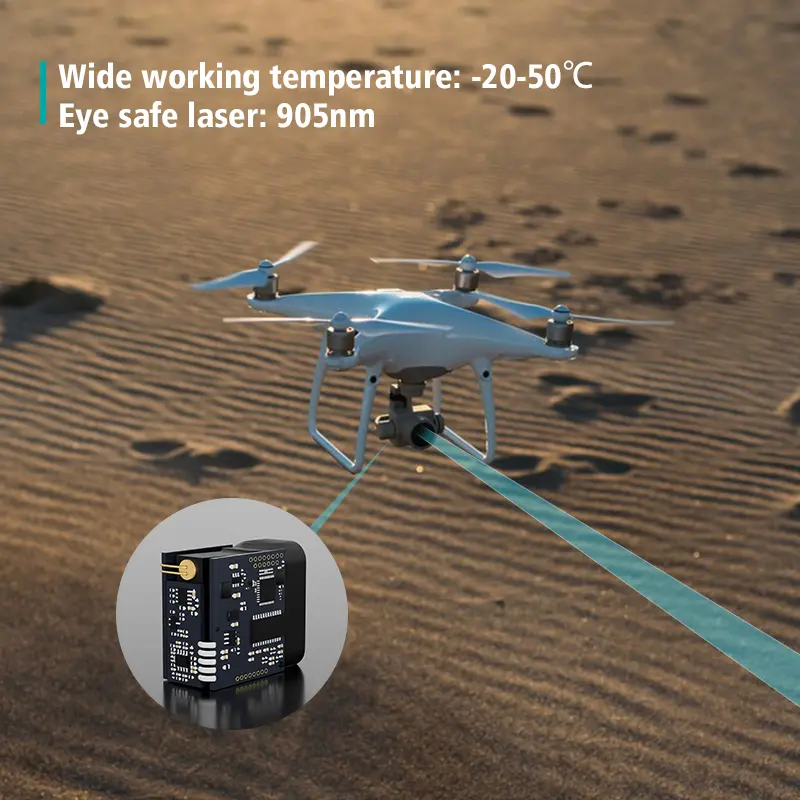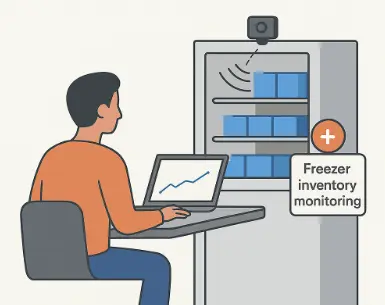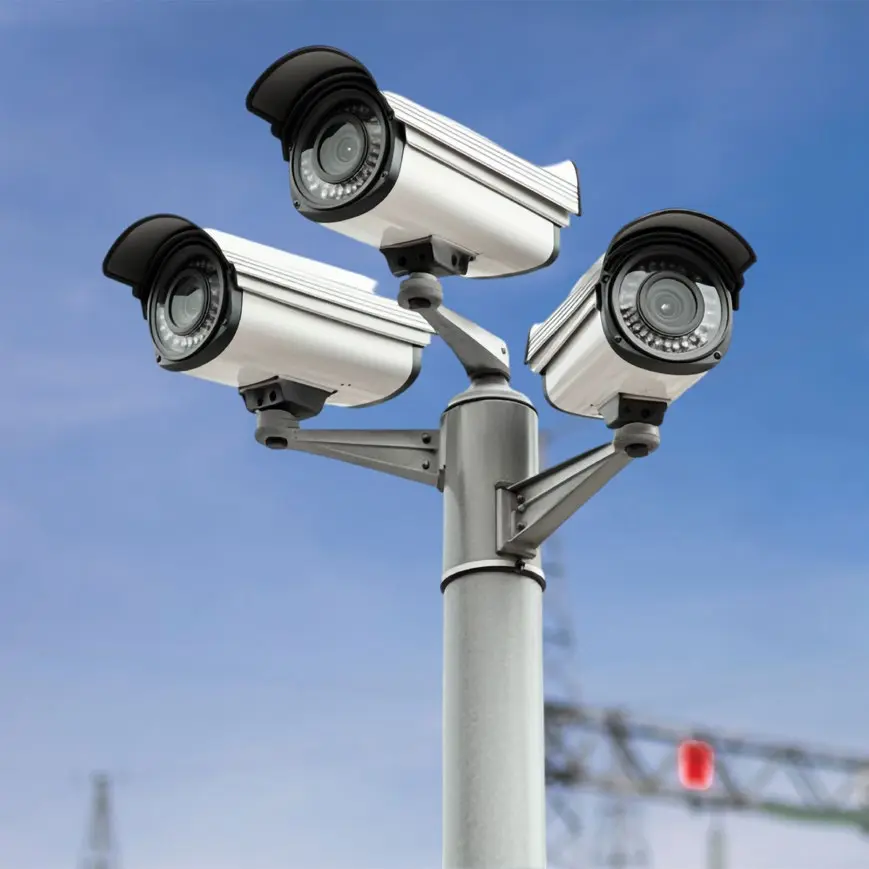1. Introduction: The Future of Sports Motion Analysis
Modern athletic training increasingly depends on precise optical distance measurement to track sprinting speeds, acceleration, and reaction timing.
Unlike traditional camera-based or wearable tracking systems, non-contact distance measurement using laser time-of-flight sensors offers a high-speed, reflector-free method for measuring human motion in real time.
This approach enables coaches and researchers to capture accurate distance and speed data without interrupting the athlete’s natural movement — a crucial benefit for high-performance sports environments.
2. Understanding Optical Distance Measurement
Optical distance measurement refers to the process of determining distance by emitting a light signal (usually a laser beam) and measuring the time it takes for the reflection to return.
This time-of-flight (ToF) principle allows laser sensors to detect moving objects with high precision and repeatability, even at long ranges.
A typical distance sensing system includes:
- A laser time-of-flight sensor for high-speed data acquisition
- A microcontroller or embedded unit for processing
- A software interface for displaying and analyzing motion parameters
When combined, these components form a robust motion detection sensor network ideal for human movement tracking and sports analytics.
3. Application Scenario: Tracking Human Sprinting and Run-Up Speed
In a sports performance lab, multiple optical distance sensors are placed along a sprint lane or runway.
Each sensor continuously measures the distance between itself and the athlete, transmitting readings to a central processor at up to 100 Hz.
The system then calculates instantaneous velocity, acceleration, and movement patterns.
Key applications include:
- Sprint speed analysis and acceleration tracking
- Long jump approach monitoring
- Start reaction time measurement
- Motion studies in biomechanics or physiotherapy
- Integration into sports robots or automated motion systems
This distance sensing system eliminates the need for retroreflectors, markers, or wearable devices, making it a fully non-contact distance measurement solution.
4. Technical Challenges and Limitations
🧩 (1) Reflectivity Without Retroreflectors
Human skin and sports clothing often have low and inconsistent reflectivity, which can affect the return signal of the laser time-of-flight sensor.
Low reflectance surfaces (such as dark fabric) may slightly reduce accuracy or detection range.
Optimization:
Use ToF laser modules with automatic gain control (AGC) and multi-echo processing. These functions adapt to low-reflective targets and maintain reliable optical distance measurement even without reflectors.
🧩 (2) Motion Direction and Body Posture Effects
As athletes lean forward or move at angles, the reflection geometry changes, causing temporary variations in distance data.
Optimization:
A multi-sensor layout and sensor fusion algorithms can correct for angular motion, allowing continuous and stable human motion tracking throughout complex movements.
🧩 (3) Environmental Interference
Outdoor sunlight or indoor reflections may influence laser measurement technology performance.
Optimization:
Deploy sensors with optical bandpass filters, narrow beam divergence, and modulated time-of-flight signals, ensuring stable operation under various lighting conditions.
5. System Architecture of the Distance Sensing System
1️⃣ Sensing Layer
- Consists of multiple laser time-of-flight sensors or distance measuring modules
- Each module performs continuous optical distance measurement at up to 100 Hz
2️⃣ Processing Layer
- Embedded platforms such as Raspberry Pi, ESP32, or PLC
- Executes filtering, synchronization, and speed computation algorithms
- Enables real-time feedback for training optimization
3️⃣ Visualization Layer
- Desktop or web-based dashboard
- Displays speed curves, stride rhythm, and performance statistics
- Exports motion profiles for advanced human motion tracking research
6. Advantages of Optical Distance Measurement in Sports
| Feature | Benefit |
|---|
| Non-contact sensing | No need for reflectors or wearables |
| High-frequency updates | Up to 100 Hz data for detailed motion profiling |
| Compact and scalable | Easy to install multiple units |
| High precision | Millimeter-level accuracy using ToF principles |
| Flexible integration | Works with industrial and DIY systems alike |
By leveraging laser measurement technology, this system transforms traditional training into a data-driven performance monitoring solution.
Recommended products : Meskernel LDJ series — Longer-range option (up to 200 m) for extended runway/tracking distances.






7. Conclusion
Optical distance measurement offers a revolutionary approach to capturing sports performance data with unmatched precision and simplicity.
Using laser time-of-flight sensors within a distance sensing system, coaches and engineers can achieve accurate non-contact distance measurement for real-time motion evaluation.
Even under challenging conditions — such as low reflectivity or rapid posture changes — modern ToF laser modules provide stable, continuous tracking.
This technology is not only improving how athletes train but also shaping the future of sports science and motion analytics.
FAQ – Optical Distance Measurement for Sports Applications
-
Can laser time-of-flight sensors detect humans without a reflector?
Yes. High-quality optical distance sensors with strong signal processing can measure human targets directly, though performance may vary depending on clothing color and surface reflectivity.
-
What is the maximum frequency for real-time distance updates?
Many industrial-grade distance measuring modules can output raw data via UART or RS485 at up to 100 Hz, suitable for sprinting or dynamic movement analysis.
-
How accurate is non-contact distance measurement in motion tracking?
Typical accuracy is within ±10 mm for dynamic targets and even higher for static measurements, depending on range and environmental conditions.
-
Can the distance sensing system be integrated with Arduino or Raspberry Pi?
Absolutely. Most ToF laser modules support standard serial protocols, allowing direct integration with embedded systems for custom applications.
-
How does optical distance measurement compare with camera-based motion tracking?
It is faster, more robust, and lighting-independent, requiring no calibration or image processing — ideal for simple, real-time sports training sensor systems.
https://meskernel.net/range-finder/